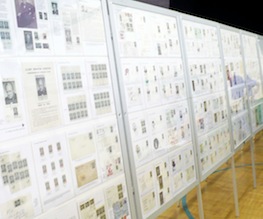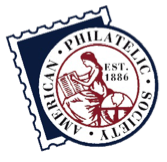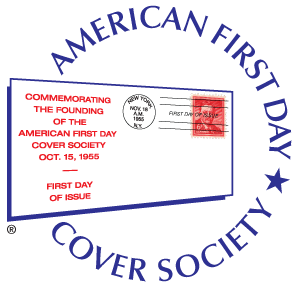THE QUESTION BOX
by Alan Warren
I have a cover that is sealed but appears to contain something. How do I find out what it is?
This is an important question for cover collectors and the possible solutions require a great deal of care.
First hold the cover up to a strong light and try to determine what is inside. If it looks like just a plain stuffer card without any printing or writing, you might want to leave well enough alone. However, if the stuffer appears to have something printed or written on it, then you will probably want to satisfy your curiosity and learn something in the process.
There are several ways to go about opening the sealed cover. First I would take a thin-bladed knife and work it under the flap and along its edge. It is amazing how many covers were loosely sealed and will open with this approach. If this doesn't work, you can always carefully trim the very edge of the envelope with a paper cutter or scissors. Or maybe use a letter opener if you can work it in. I suggest opening the short end away from the stamp and cancel to prevent damage to those two important elements.
You can also try "steaming" the envelope open but this can lead to color smears if the address is written in water-soluble ink, or wrinkles to the cover even after it is dried. The contents may tell us something important about the cover. It could be the dealer's or servicer's card that establishes who sold or serviced the FDC. It might even be an advertisement that tells us something we did not know about this cover dealer or cachetmaker.
It might be a brief note or a letter from the sender that tells us something about how the cover was prepared. It could also be a newspaper article that has important information about the stamp issue. Removing newsprint and some letter papers that are poorly made will help prevent (further) staining, which affects the appearance, and hence value, of the cover.
If the enclosure is pertinent to the FDC, you might want to mount it with the cover on an album page or for an exhibit. If it is a dealer or servicer, I usually send photocopies of the cover and the enclosure to Allison Cusick for the AFDCS archives. Such information helps document the activity, or location, or the date of servicing of the dealer or servicer.
Some sealed FDCs need to be opened, even when it is obvious they do not contain anything, because the sealing has created wrinkles in the cover that can lead to serious damage. So there are several reasons for opening sealed covers. It helps document FDC history and may help preserve the cover. Just be sure to do it with care.
What are some good suggestions for a first-time exhibitor?
This question comes up, often in anticipation of participating in our AMERICOVER exhibitions. The following observations apply not only to beginning exhibitors but to experienced ones as well.

Some of these suggestions appear in an article in the December 2005 issue of FlAP News, published by the Philatelic Federations of Asia and Australia.
The author, Ross Marshall, is an accredited international judge from New Zealand and served on the jury at the Washington 2006 exhibition. He recommends one very important task for any exhibitor: to write a good title page that describes briefly the story that the exhibit tells and how that story is developed with the material shown. If the exhibitor is not clear on this point, then the judges will be confused also.
Another point is that exhibitors need to highlight key items, or any that show original research, so that they stand out. The highlighting should be tasteful, such as use of a mat or a different font and not some garish method like bright red frames or arrows on the items.
Borders on pages and large headings on every page take away valuable space that could be used for material or text. Every page does not need a heading if the story line is clear and a heading is used to begin each new section of the exhibit. Small headings on the page are fine and some exhibitors use a chapter approach by using a general heading and then a subheading.
Marshall also warns that a single cover on a page should be a key item and the write-up should be placed so as not to leave large gaps of white space. Photocopies or scans should be approximately 75 percent of actual size and if the purpose is to show just a marking on the back of the cover, then only that mark needs to be copied or scanned, not the entire cover reverse.
These guidelines are universal for all displays and should be kept in mind by the exhibitor while preparing the pages.

